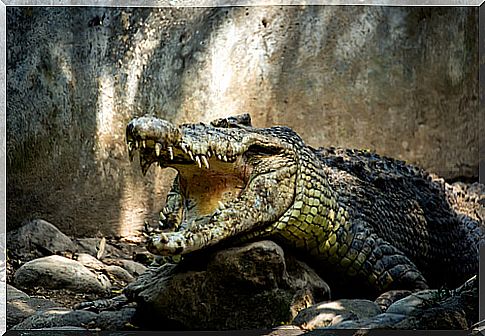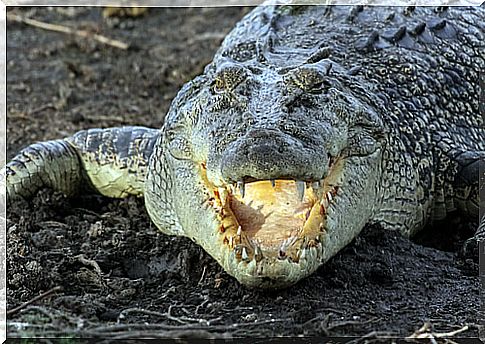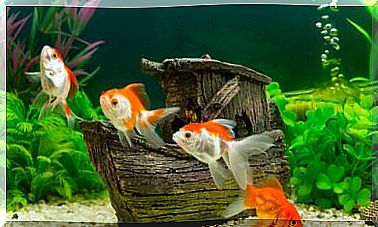Are Crocodiles Aggressive?

These large semi-aquatic reptiles attack mainly out of hunger, to defend their young or because they feel threatened and cornered. In most cases, people, either out of curiosity, because they are sightseeing, or simply out of curiosity, tend to transgress the logical limits allowed to contemplate these enormous specimens.
Crocodiles are natural predators whose habitat has been gradually invaded by the presence of humans. They tend to walk away if people get close, but crocodiles can be aggressive if disturbed.
These animals have strong jaws, have sharp teeth and reach up to five meters in length. They react violently to their main predator, which is humans.
Common sense?
The recklessness reaches men and women who want to take a selfie by placing their face right next to the jaws of these shredding machines, confident that due to the corpulence they usually own, they will react slowly and lazily.
The reality of these large animals is that they have agile and precise movements. Other accidents that occur with some frequency are related to adventurous tourists.
Some even try to fit beef, chicken, or fish into their large jaws without any precautions. What happens is that the crocodiles confuse the objective, and they come to attack these people who are not careful.

Why are crocodiles aggressive?
Crocodiles tend to feed on just about anything. They are opportunistic: everything in their power they take advantage of. In some places this becomes a problem because they already associate the presence of human beings with food.
There is the false perception that only the largest specimens should be feared. The reality is that crocodiles are aggressive, both large and small . You have to be careful with all species and do not consider any of them harmless. Even the smallest bites are often very painful.
Types of crocodiles
There are 23 identified species of crocodiles, both in fresh and salt water. They belong to the order of Crocodylia , the same family as the alligators, but with many differences.
The crocodiles best known for their attacks on humans are the Nile crocodile and the marine crocodile. Other species are the American alligator, the Cuban crocodile, the black caiman, and the gharial crocodile.
These animals are great swimmers, capable of developing speeds of around 32 km / h. They also have the ability to breathe underwater, so they can remain submerged for a long time without major problems.
In practice, many of these animals remain immobile in the depths of rivers, unable to move when they are digesting.

Curiosities
Crocodiles do not usually feed daily, but every seven days. They do not go hunting, but wait for their prey to appear. As they are in the water most of the time, they can have access to almost all the animals that go to hydrate themselves on the banks of rivers or lagoons, so they do not need to go looking for them.
Among their prey it is not frequent to get them to feed on human beings. But, since they are hunters by chance, if they are hungry and people are within their reach, they will not waste the moment.
Crocodiles don’t move fast on land. Their legs are quite short compared to the size of their body, while they are very heavy. For this reason, they lose the dexterity, the elegance, but above all the speed they show in the water.
Their two main purposes when it comes to going out to dry surfaces is to sunbathe and lay their eggs: females can lay up to 100 eggs in a single laying. Their textured and scaly skin allows them to enjoy the benefits of the star king, without it hurting them.
Precisely, it is the same skin that protects them in their wild life and that for their human predators means a lot of money. Most of the time in the form of boots, wallets or the like, which seriously threatens the continuity of the species.








